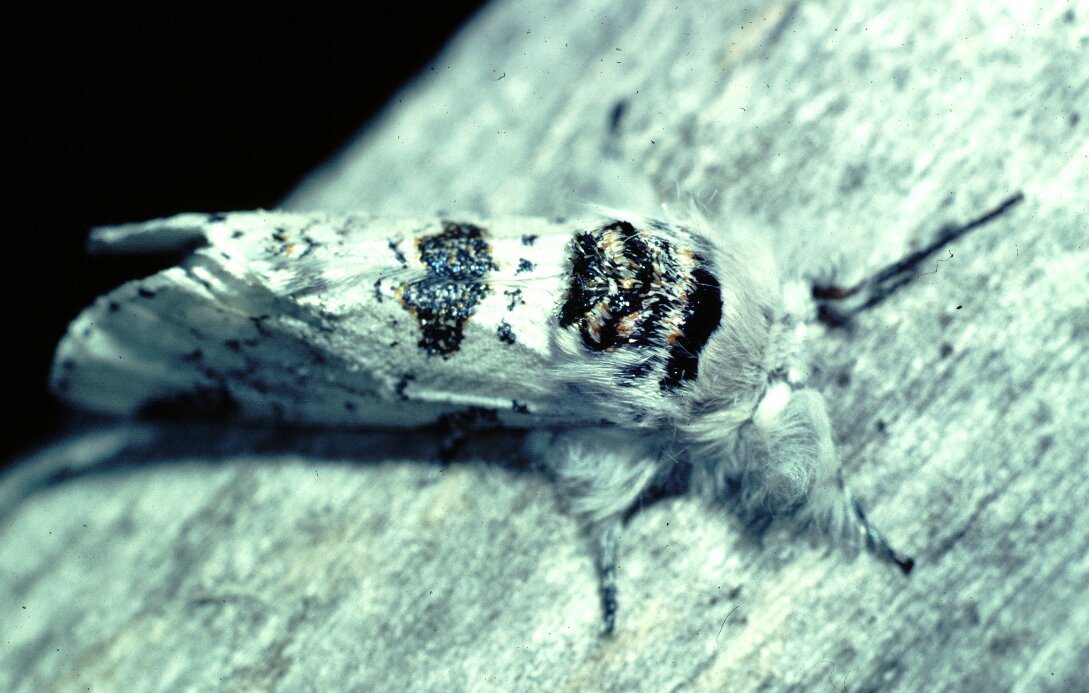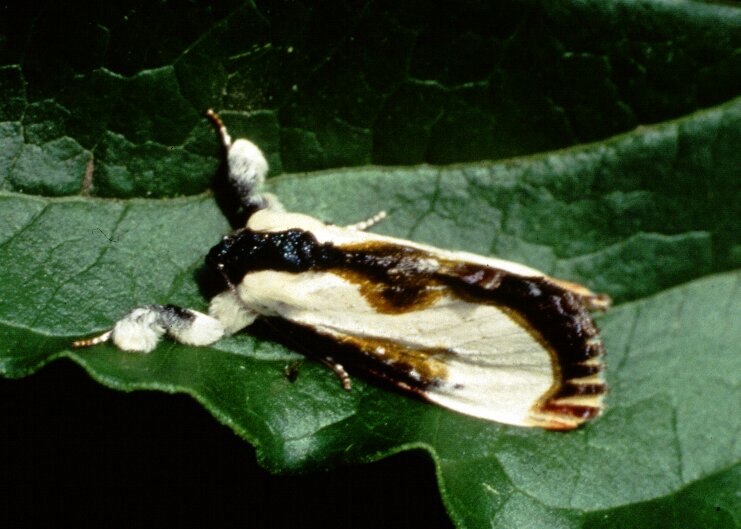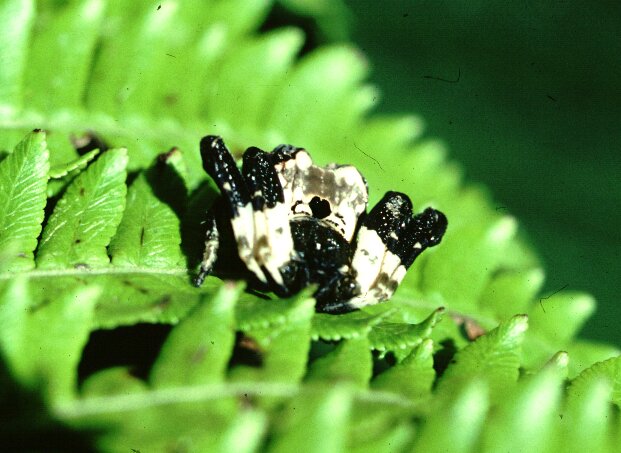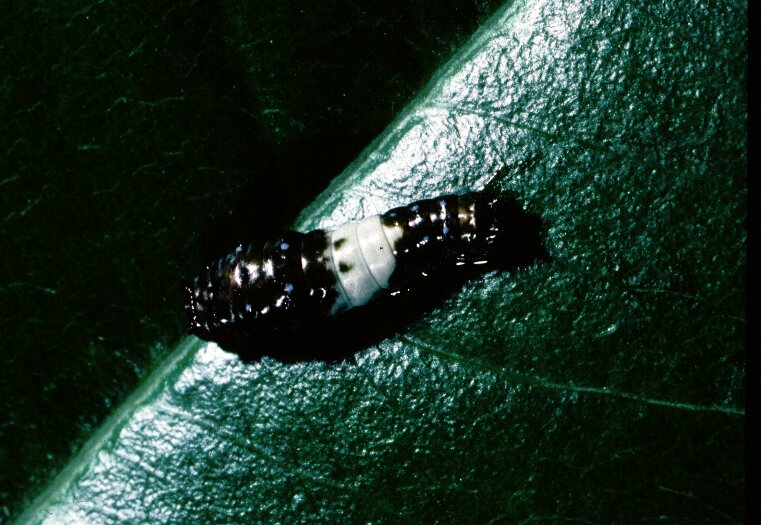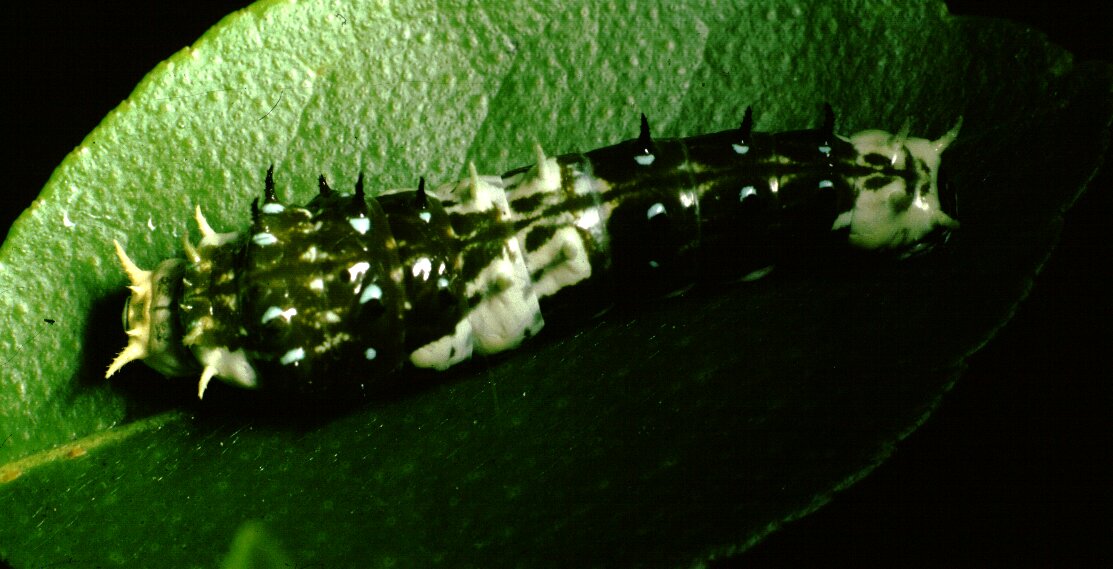Science, Religion, and the Creation/Evolution Controversy
Is it fair to teach creationism in science classes? A lesson from
bird-dropping moths.
An essay by J. E. Armstrong
January 2000
The public controversy about teaching evolution simmers along
because of profound misunderstandings about both science and religion. Science and
religion are mutually exclusive aspects of human experience; that is, each deals with a
separate domain and operates in very different ways, as the accompanying chart
demonstrates. Thus it is possible to be both a scientist and a religious person, or a
religious person who understands science. The only element of faith needed in science is a
belief in an objective natural world because proof requires "putting the question to
nature" in the form of testable predictions. Religious belief is based wholly upon
faith and proof comes from revelation or religious authority.
| |
SCIENCE |
RELIGION |
| Source of truth: |
Observation, experimentation, i.e., investigation of the natural world. |
Revelation; Scriptures; Communication with supernatural. |
| Type of truth: |
Objective; Same for all cultures |
Subjective; Differs by culture; differs by interpretation |
| Who can discover truth: |
Anyone with sufficient training and education. |
Select few; self-appointed or selected. |
| Truth is: |
Provisional pending new data and better explanations. |
Absolute within the context of each religion. |
| Nature of proof: |
Data; Confirmation of predictions based on hypotheses. |
None; operates on faith alone. |
| Deals with: |
Natural world. |
Spirituality; Supernatural |
Only when someone attempts to mix religion and science that
conflicts occur producing pseudoscience or dogmatism. Truths based upon religious
authority have no place in science because they are not subject to any scientific proof.
Many examples exist of mixing of these two endeavors. Scholarly "analysis" of
scriptures yielding "proofs" that the Earth was created just 6000 years ago;
that one set of beliefs are superior to another; that only the adherents of a particular
sect will obtain salvation; that one ethnic group is superior to another and therefore
allowing their enslavement or extermination; that the Earth is the center of the Universe.
Transgressions also occur in reverse; science is used to argue that the supernatural does
or does not exist. People seek scientific evidences in support of their religious
authority. However neither realm can make valid statements about the other, unless you
hold the belief that the universe operates by magic and supernatural whim rather than by
natural laws discovered by science, or that the supernatural does not exist. Clearly
science could not operate under magical conditions, and consistent results of scientific
tests would not be expected since "operational laws" could be altered by any
deity.
The root of the conflict between science and religion may be in the
retreat in religious authority. Prior to science, religion was the only means available to
explain virtually all observed phenomena. Following the rise and spread of science many
phenomena previously attributed to the supernatural (disease, genetic defects, lightening,
plagues, epilepsy, comets, mental illness, etc.) became known to have natural causes and
explanations. The Catholic Church finally admitted, after 451 years, that Galileo was
correct; the Earth was not the unmoving center of the Universe, although previously
"scriptural proofs" argued otherwise. Mental illness, birth defects, and disease
are no longer considered the mark of evil or of God’s displeasure or punishment.
When viewed dispassionately or pragmatically, the separation of the
religious and scientific experiences seems clear and well defined. Adopt a pragmatic
perspective for a moment and take this simple test. What you do when your car stops
running determines your beliefs in this matter; if you call a mechanic, you believe in a
scientific, natural universe, if you call an exorcist, you believe in a supernatural
universe. In other words, virtually all religious people have developed a duality for
living in a natural world operating by science and yet retaining religious belief. But
there are no faith-based car mechanics or magical car repairs. Very simply science works
really well in explaining how things work. This does not argue that religion has no place
in the human experience.
Some may argue that either the religious or scientific experience
can stand alone, but this seems rather untenable. It is doubtful that anyone outside a
handful of the remaining gathering-hunting societies would or could choose to set aside
the scientific understandings that permeate our lives. Similarly it does not seem likely
we can live without a religious experience. All people live by some type of religiously
based code of conduct. Science on the other hand is not immoral, but it is amoral, making
no ethical or moral statements at all.
Ah, but now we get to the real sticking point. Biological science
tells us things about our human nature that also conflict with religious beliefs, and so
many people attempt to refute, dismiss, or ignore this part of science; witness the many
opinions about evolution. So here people construct a conflict by attempting to mix science
and religion, producing an ad hoc combination of the two, a pseudoscience called
creationism in all its many forms, e.g., intelligent design.
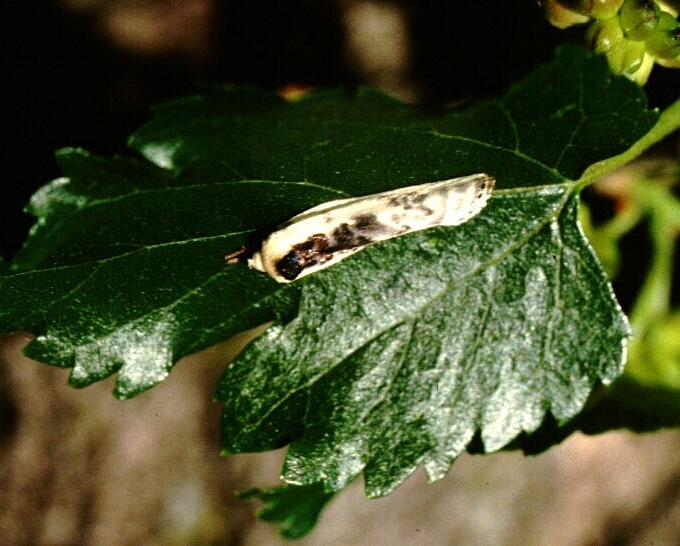 To better understand the limitations of the religious and scientific
experiences, consider how different they are in use. Remember, science is a process for
understanding the natural world, while religion is a belief system. You observe a
phenomenon, a black and white bird dropping on a leaf, but closer inspection shows that it
is actually a moth. While you may have seen many camouflaged moths, this moth is quite
conspicuous, boldly black and white against the green leaf.
To better understand the limitations of the religious and scientific
experiences, consider how different they are in use. Remember, science is a process for
understanding the natural world, while religion is a belief system. You observe a
phenomenon, a black and white bird dropping on a leaf, but closer inspection shows that it
is actually a moth. While you may have seen many camouflaged moths, this moth is quite
conspicuous, boldly black and white against the green leaf.
Biologists would suggest that although birds can see this moth easily, the moth’s
mimicry of a bird dropping is so good it fools them, and since birds obviously do not
consider their own excrement a potential meal, the moth hides in plain sight. The
biological hypothesis is that natural selection, a well-established mechanism of
evolutionary change, has produced an unusual mimicry that protects this moth species from
bird predation by being conspicuous, but looking inedible. Many common moths,
active nocturnally, hide from bird predators by day camouflaged on tree bark or other
backgrounds. But the bird-dropping moth is very different because it can easily be
seen.
Perhaps you prefer the creationist or intelligent design hypothesis:
this species of moth was divinely created to look just so. Many people argue that precise
adaptations shown by organisms are the best evidence of intelligent design, the hallmark
of a creator. Note that both hypotheses account for the observations, and that neither can
be proved true. So are we at a standoff? Does the creationist explanation deserve a fair
place in our teaching of biology beside evolution? The issue cannot be decided on this
basis alone, because science is not a belief, it is a process for learning about the
natural world. Examine what happens when a science student attempts to use both
hypotheses to learn about the natural world.
Evolutionary theory allows biologists to make testable predictions
about the biology of these moths that either will be consistent with the hypothesis
(supporting its truth) or that will serve to falsify it. Several predictions come to mind.
The nearest relatives of the bird-dropping moths should be light in color, probably with
some black flecking or spots, and may have the ability to wrap their wings around their
bodies. They probably are cryptically colored, hiding by blending with their backgrounds.
Perhaps we erred in our judgment that the bird-dropping moth is effectively
"hiding" from predators. Perhaps this moth just tastes bad, and birds have
learned to avoid eating such conspicuous moths like they have learned to avoid monarch
butterflies. Clearly a bird-feeding experiment could determine if the bird-dropping
moth was palatable or not. If palatable, then if birds could perceive the moth they
would eat it, so any variants that look less like bird-droppings should be eaten more
frequently than better mimics. These predictions can be tested by manipulation experiments
and observations, which will either confirm or falsify them. If all generate results
consistent with our evolutionary hypothesis, then our confidence in the explanation would
increase because of all the supporting data.
What can we predict about the intelligent design of divine creation?
We know nothing of the thoughts or motivations involved. Was it a joke to create a moth
that looks like bird droppings? Whatever the reason, other bird-dropping mimics, e.g.,
spiders, caterpillars, beetles, also were created (see below), just so, and the same explanation is
applied. Since each species was produced according to some divine plan, no predictions
about related species can be generated. Perhaps all bird-dropping organisms should
be considered close relatives because they have the same design. Creationism
explains everything, but fails to generate testable predictions about the moth’s
biology or relatives because anything might be true, anything is possible. Nothing
whatever is learned about the phenomenon of bird-dropping mimicry. Each and
every bird-dropping organism could have been designed to display the exact same
pattern, something biology could not explain in unrelated organisms. In fact, a creator who
wanted their hand to be known by their creations could produce a species that completely
defied all attempts at naturalistic explanations and shows no evidence of relatedness to
any other organism. A great deal of the confidence biologists have in the
truth of evolution is based upon its ability to offer testable explanations of
very diverse biological phenomena.
The biological explanation of bird-dropping mimics is that
they represent an evolutionary convergence in form caused by similar forces of
natural selection acting upon available genetic variation present in unrelated
species. Clearly this explanation predicts that each organism mimicking a
bird-dropping should be subject to predation by birds, and no such bird-dropping
organism should be found that is not. So far this prediction has been
found true.
Darwin could not refute the creation/intelligent design hypothesis
of creationism, but he insisted that biologists should proceed using the only viable
approach, science, and attempting to falsify natural selection and descent with
modification, which biologists have been attempting to do for 140 years. Every aspect of
Darwin’s hypotheses has been demonstrated true repeatedly and natural selection has
been married to our understanding of genetic inheritance. Organisms are variable; some of
the variations are inherited; the environment interacts with all the variants; some of the
variants will be more successful, leaving more offspring, more copies of their genes, than
others; the genetics of the population will change as a result; the accumulation of such
changes can result in reproductively isolated populations, new species. Thus evolution
represents a well-verified scientific explanation, a scientific truth. Since it can and
will change, evolutionary theory is a conditional truth, as are all scientific statements.
This is their strength not their weakness because since they can change they can be
corrected and improved.
The hallmark of religiously based pseudoscientific explanations is
that they offer only untestable, waterproof explanations, and as such they are
scientifically useless. Creationism isn’t part of science because of any dogmatic
belief in evolution on the part of biologists; creationism isn’t part of science
because it is useless. Creationism fails to offer any predictions that can be tested; as a
concept it prevents science from operating. Falsified explanations, e.g., inheritance of
acquired characters, are different from pseudoscience, and failed hypotheses frequently
are taught to demonstrate how science has learned and accumulated knowledge by
falsification. However, teachers of science have no obligation to offer pseudoscientific
explanations to students.
So like it or not, you can not mix science and religion. The two are
quite distinct and mutually exclusive, but when they transgress their respective domains,
problems arise. The "let’s be fair and teach both explanations" argument is
nothing but a ploy, and it appeals only to those not familiar with science as a process.
Explanations aren't dogmatically believed in science, they must be tested, nature will
continue to be studied, and some explanations will change and be modified, but scientific
explanations must be useful in furthering knowledge. Creationism isn’t going to
change, it cannot be tested, and science says nothing about the existence of the creator,
other than, natural phenomena can be explained without reference to one. Indeed, one
result of putting religiously based concepts into a scientific framework is that it allows
these authoritarian truths to be tested and perhaps found false. Obviously the faithful
would not abandon their religion as a result, but do people with a religious world view
really want such testing of their religion? If you found any of the previous discussion
discomforting, then you can readily understand what a critical scientific evaluation of a
religiously based concept would entail.
Evolution can be lobbied and legislated out of classrooms, but it
cannot be removed from science while it remains of paramount utility. In my 30 years in
biological sciences, I have read and heard many comments from the general public critical
of evolution, but none have presented an accurate depiction of science, scientists, or
evolution, so a considerable part of this conflict is based on ignorance. Erroneous and
refuted claims (e.g., human footprints occur with those of dinosaurs), incorrect
explanations, (e.g., the 2nd law of thermodynamics doesn't allow evolution), and false
statements (e.g., Darwin had a deathbed conversion and recanted his belief in evolution)
are repeatedly used by proponents of creationism, and no amount of correction seems to
affect their reuse because they are believed rather than understood. Such ignorance
becomes self propagating when fear of offending people or fear of controversy causes
teachers to avoid teaching certain science topics. Mixing science and religion only serves
to further ignorance, and we may indeed wonder where such non-scholarly, anti-intellectual
religious thinking is leading people in the United States.
[Click here to obtain a B&W illustration of the
bird-dropping moth.]
 To better understand the limitations of the religious and scientific
experiences, consider how different they are in use. Remember, science is a process for
understanding the natural world, while religion is a belief system. You observe a
phenomenon, a black and white bird dropping on a leaf, but closer inspection shows that it
is actually a moth. While you may have seen many camouflaged moths, this moth is quite
conspicuous, boldly black and white against the green leaf.
To better understand the limitations of the religious and scientific
experiences, consider how different they are in use. Remember, science is a process for
understanding the natural world, while religion is a belief system. You observe a
phenomenon, a black and white bird dropping on a leaf, but closer inspection shows that it
is actually a moth. While you may have seen many camouflaged moths, this moth is quite
conspicuous, boldly black and white against the green leaf. 